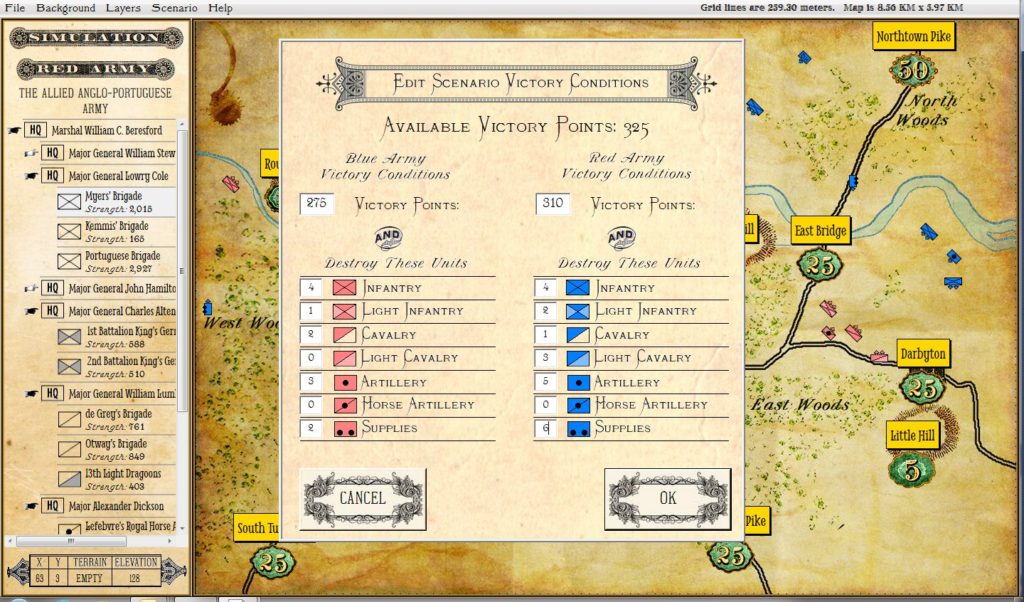The General Staff Scenario Design module allows users to create new battle scenarios by combining any two armies created in the General Staff Army Design module with any map created in the General Staff Map Design module.

This screen shot of the General Staff Scenario Editor shows how victory conditions are established for a scenario. Click to enlarge.
The General Staff Wargaming System allows users to create armies, maps and battles from the Age of Gunpowder. These can be historical recreations or completely new ‘what if’ scenarios.


